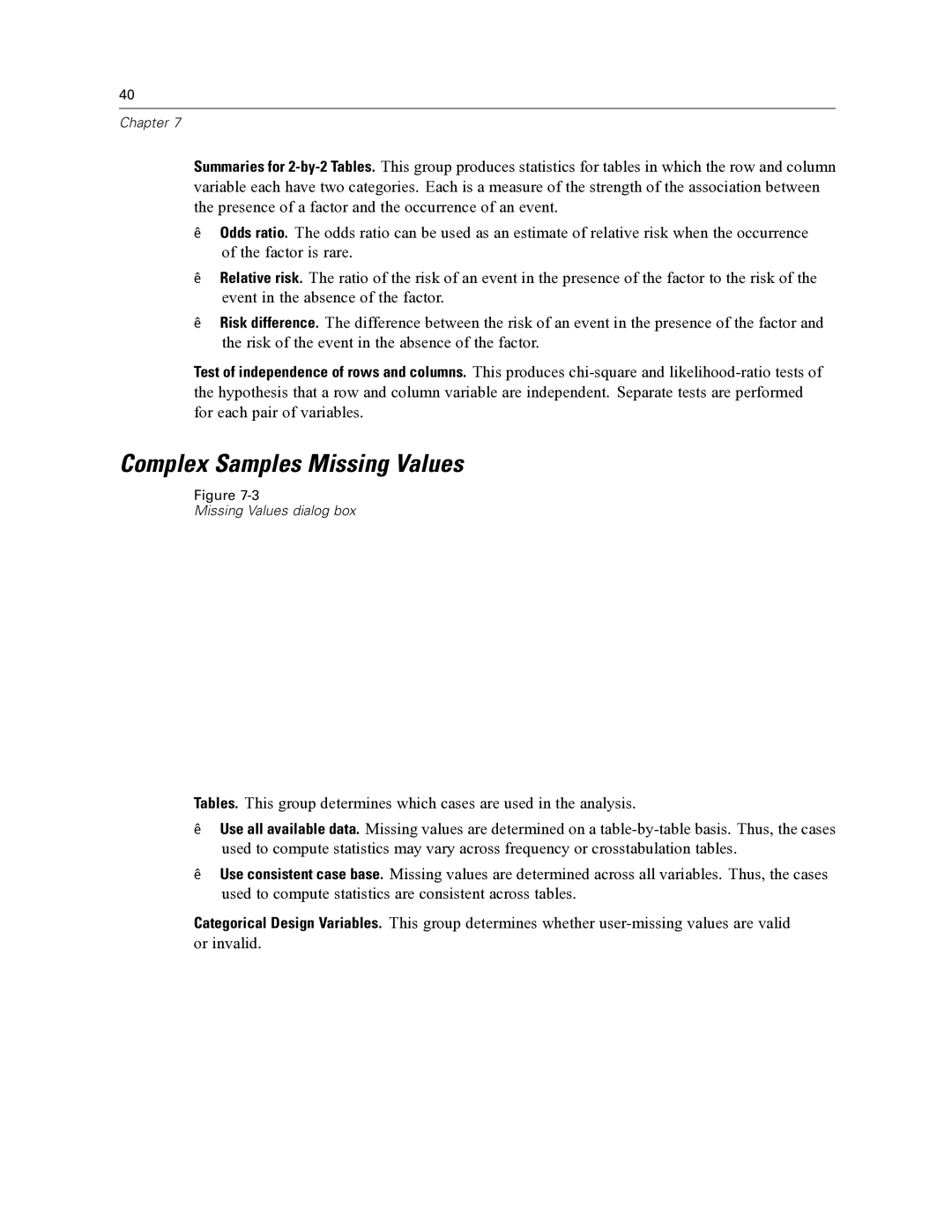
40
Chapter 7
Summaries for
Odds ratio. The odds ratio can be used as an estimate of relative risk when the occurrence of the factor is rare.
Relative risk. The ratio of the risk of an event in the presence of the factor to the risk of the event in the absence of the factor.
Risk difference. The difference between the risk of an event in the presence of the factor and the risk of the event in the absence of the factor.
Test of independence of rows and columns. This produces
Complex Samples Missing Values
Figure
Missing Values dialog box
Tables. This group determines which cases are used in the analysis.
Use all available data. Missing values are determined on a
Use consistent case base. Missing values are determined across all variables. Thus, the cases used to compute statistics are consistent across tables.
Categorical Design Variables. This group determines whether
